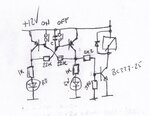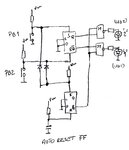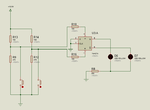
- Joined
- Jan 22, 2008
- Messages
- 53,215
- Helped
- 14,794
- Reputation
- 29,875
- Reaction score
- 14,317
- Trophy points
- 1,393
- Location
- Bochum, Germany
- Activity points
- 301,502
I read post #1 so that both buttons pressed must not be handled. Thus the simped RS NAND latch should be OK.
https://en.wikipedia.org/wiki/Flip-flop_(electronics)#SR_NAND_latch
https://en.wikipedia.org/wiki/Flip-flop_(electronics)#SR_NAND_latch









